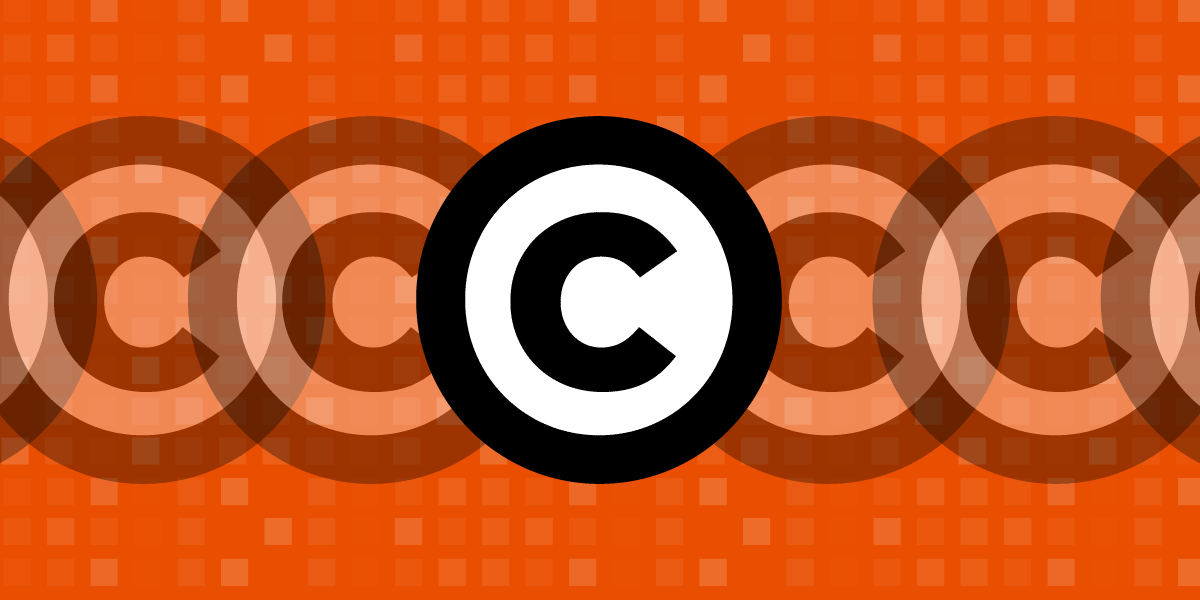We're taking part in Copyright Week, a series of actions and discussions supporting key principles that should guide copyright policy. Every day this week, various groups are taking on different elements of copyright law and policy, addressing what's at stake and what we need to do to make sure that copyright promotes creativity and innovation.
There has been a notable, and long overdue flurry, of antitrust actions targeting Big Tech, launched by users, entrepreneurs, and governments alike. And in the US and abroad, policymakers are working to revamp our antitrust laws so they can be more effective at promoting user choice.
These are positive developments, but this renewed focus on antitrust risks losing sight of another powerful legal lever: copyright. Because there’s copyrighted software in every digital device and online service we use, and because the internet is essentially a giant machine for copying digital data, copyright law is a major force that shapes technology and how we use it. That gives copyright law an enormous role in enabling or impeding competition.
The Digital Millennium Copyright Act (DMCA) is a case in point. It contains two main sections that have been controversial since they went into effect in 2000. The "anti-circumvention" provisions (sections 1201 et seq. of the Copyright Act) bar circumvention of access controls and technical protection measures. The "safe harbor" provisions (section 512) protect service providers who meet certain conditions from monetary damages for the infringing activities of their users and other third parties on the net.
Congress ostensibly passed Section 1201 to discourage would-be infringers from defeating DRM and other access controls and copy restrictions on creative works. In practice, it’s done little to deter infringement – after all, large-scale infringement already invites massive legal penalties. Instead, Section 1201 has been used to block competition and innovation in everything from printer cartridges to garage door openers, videogame console accessories, and computer maintenance services. It’s been used to threaten hobbyists who wanted to make their devices and games work better. And the problem only gets worse as software shows up in more and more places, from phones to cars to refrigerators to farm equipment. If that software is locked up behind DRM, interoperating with it so you can offer add-on services may require circumvention. As a result, manufacturers get complete control over their products, long after they are purchased, and can even shut down secondary markets (as Lexmark did for printer ink, and Microsoft tried to do for Xbox memory cards.)
On the other hand, Section 512’s “safe harbors” are essential to internet innovation, because they protect service providers from monetary liability based on their users’ infringing activities. To receive these protections service providers must comply with the conditions set forth in Section 512, including “notice and takedown” procedures that give copyright holders a quick and easy way to disable access to allegedly infringing content. Without these protections, the risk of potential copyright liability would prevent many online intermediaries—from platforms to small community websites to newspapers and ISPs -- from hosting and transmitting user-generated content. Without the DMCA, much of big tech wouldn’t exist today – but it is equally true that if we took it away now, new competitors would never emerge to challenge today’s giants. Instead, the largest tech companies would strike lucrative deals with major entertainment companies and other large copyright holders, and everyone else who hosted or transmitted third-party content would just have to shoulder the risk of massive and unpredictable financial penalties—a risk that would deter investment.
There is a final legal wrinkle: filtering mandates. The DMCA’s hair-trigger takedown process did not satisfy many rightsholders, so large platforms, particularly Google, also adopted filtering mechanisms and other automated processes to take down content automatically, or prevent it from being uploaded in the first place. In the EU, those mechanisms are becoming mandatory, thanks to a new copyright law that conditions DMCA-like safe harbors on preventing users from uploading infringing content. Its proponents insisted that filters aren't required, but in practice that’s the only way service providers will be able to comply. That’s created a problem in the EU – as the Advocate General of the EU Court of Justice acknowledged last year, automated blocking necessarily interferes with the human right to free expression.
But filtering mandates create yet another problem: they are expensive. Google has famously spent more than $100 million on developing its Content ID service – a cost few others could bear. If the price of hosting or transmitting content is building and maintaining a copyright filter, investors will find better ways to spend their money, and the current tech giants will stay comfortably entrenched.
If we want to create space for New Tech to challenge Big Tech, antitrust law can’t be the only solution. We need balanced copyright policies as well, in the U.S. and around the world. That’s why we fought to stop the EU’s mandate and continue to fight to address the inevitable harms of implementation, It’s why we are working hard to stop the current push to mandate filters in the U.S. as well. We also need the courts to do their part. To that end, EFF just this month asked a federal appeals court to block enforcement of the copyright rules in Section 1201 that violate the First Amendment and criminalize speech about technology. We have also filed amicus briefs in numerous cases where companies are using copyright to shut out competition. And we’ll keep fighting, in courts, legislatures, agencies, and the public sphere, to make sure copyright serves innovation rather than thwarting it.











